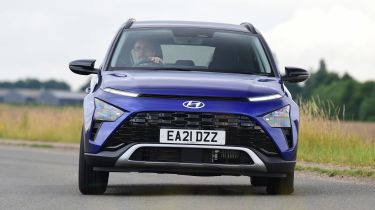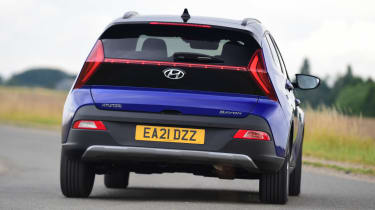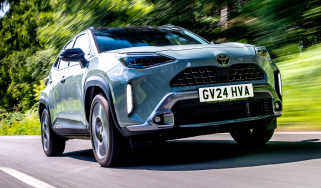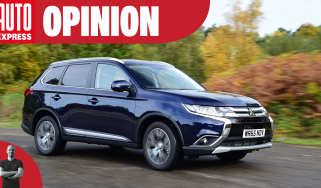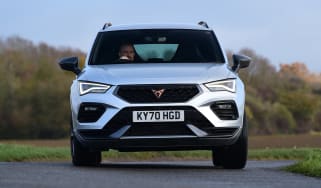Hyundai Bayon review - Engines, performance and drive
There are only two engines, both 1.0-litre petrols with mild hybrid power, but you can choose manual or auto gearboxes

The Hyundai Bayon is typical of the supermini-SUV segment - easy to drive but not exactly fun. The Ford Puma bucks this trend, as it’s more fun than other cars of its type, but most other small SUVs have much more of a focus on comfort and ease of use. The Hyundai fits right in in that way.
The steering, gearbox and pedals are all very light and don’t offer much feel or feedback. You can switch to Sport mode using a button on the centre console, but this adds artificial weight and doesn’t change much about the driving experience, which is a bit dull in general.
The manual gearbox uses Hyundai’s new clutch-by-wire set-up, which means the clutch pedal isn’t mechanically connected to the gearbox. This has benefits for efficiency and smoothness, and most won’t notice the difference, but if you’re a keen driver the disconnected feeling might remove some appeal. It’s a slick enough gear change and is nice and easy to use, so there’s no need to spend the extra on the automatic if you don’t need to.
The Bayon rides smoothly enough, and combined with the light controls it means the Hyundai is relaxing. Combine that with the quiet engines and it holds plenty of appeal for many people looking for a small SUV.
Engines, 0-60 acceleration and top speed
The 1.0-litre engines offer 99bhp or 118bhp, and both have the same torque figure of 172Nm. Like-for-like, you’ll pay around £700 more for the higher-powered model. Given most people will pay monthly via finance, that doesn’t seem unreasonable.
The engine is quiet and unobtrusive, yet delivers decent performance. 0-62mph takes 10.7 seconds in the 99bhp car and 10.4 seconds in the 118bhp model, though the dual-clutch auto adds a second to the time in the lower-powered car (but not the 118bhp model).
Since both engines have the same torque figure (at 1,500rpm), they feel similarly punchy from low revs and you don’t need to rev them hard to get decent performance. Top speed is 112-115mph depending on which model you pick.
The 48v mild hybrid system sounds complicated but you might not even notice the difference between this and a car without the set-up. It’s totally unobtrusive and recharges a special battery when you slow down using energy that would otherwise be lost under braking. It then feeds this energy back into the powertrain using a start-generator motor to boost efficiency.
